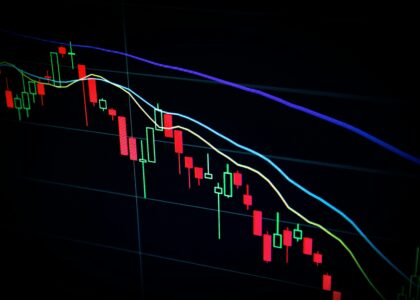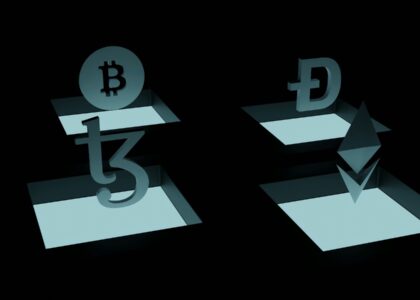How Bitcoin’s Unique Supply Mechanism Shapes Price, Adoption, and the Future of Finance
Bitcoin is often described as “digital gold” because of its scarcity and predictable monetary policy. Unlike fiat currencies, which can be printed at will by central banks, Bitcoin operates on a fixed supply of 21 million coins. This limited issuance is enforced through a process known as Bitcoin halving, an event that occurs roughly every four years and reduces the reward miners earn for validating transactions.
Halving is not just a technical feature—it is central to Bitcoin’s economic design. Each halving lowers the rate of new Bitcoin entering circulation, creating a form of programmed scarcity. Historically, halvings have been associated with dramatic price rallies, intense media attention, and heightened institutional interest. But they also raise debates around sustainability, mining economics, and long-term market stability. Explore the intricate world of Bitcoin halving. Discover how this critical event impacts cryptocurrency markets, mining economics, and global digital asset strategies.
Introduction:
Bitcoin halving represents one of the most fascinating and consequential events in the cryptocurrency ecosystem. A unique mechanism hardwired into Bitcoin’s fundamental design, the halving is a testament to the cryptocurrency’s innovative approach to monetary policy, scarcity, and value creation.
This comprehensive guide will unravel the complexities of Bitcoin halving, providing an in-depth exploration of its technical foundations, historical implications, market dynamics, and potential future consequences. From understanding the basic mechanics to analyzing complex economic implications, we’ll provide a holistic perspective on this critical cryptocurrency phenomenon.
i- What is Bitcoin Halving?
Bitcoin halving refers to the event where the reward for mining new Bitcoin blocks is cut in half. This happens every 210,000 blocks (approximately every four years).
- Initial Reward (2009): 50 BTC per block
- First Halving (2012): 25 BTC per block
- Second Halving (2016): 12.5 BTC per block
- Third Halving (2020): 6.25 BTC per block
- Upcoming Fourth Halving (2024): 3.125 BTC per block
This continues until the maximum supply of 21 million BTC is reached, estimated around the year 2140. At that point, miners will only earn transaction fees.
ii- Why Bitcoin Halving Exists
Bitcoin halving is central to the cryptocurrency’s philosophy of scarcity-driven value. Unlike fiat money, where inflation reduces purchasing power over time, Bitcoin’s supply is capped and diminishing.
- Scarcity: By reducing new issuance, halving enforces Bitcoin’s deflationary nature.
- Incentive Design: Miners receive fewer coins but potentially higher-value BTC due to scarcity.
- Predictability: The schedule is transparent, preventing arbitrary inflation.
- This makes Bitcoin a self-regulating monetary system with built-in supply control.
iii- Mining Process Explained
Block Creation Mechanism:
- Computational problem solving
- Proof of Work (PoW) consensus
- Transaction verification
- Network security maintenance
- Mining Reward Structure:
- Initial reward: 50 BTC per block
- Periodic halving
- Diminishing reward over time
- Total supply cap: 21 million bitcoins
iv- Scarcity and Value Proposition
Economic Principles:
- Controlled supply
- Deflationary monetary model
- Artificial scarcity creation
- Market-driven valuation
- Comparative Analysis:
- Traditional fiat currencies: Inflationary
- Bitcoin: Deflationary
- Limited total supply
- Predictable monetary policy
v- Price Dynamics
Historical Price Patterns:
- Pre-halving accumulation
- Post-halving price appreciation
- Increased market speculation
- Institutional interest growth
- Factors Influencing Price:
- Reduced mining supply
- Increased scarcity
- Market sentiment
- Macro-economic conditions
vi- Institutional and Retail Investor Behavior
- Institutional Investors: ETFs, hedge funds, and corporations view halvings as opportunities to accumulate Bitcoin before scarcity drives up prices.
- Retail Investors: Halvings often spark FOMO (fear of missing out), leading to parabolic price rallies.
- Long-Term Holders: Historically, those who accumulate before halvings see significant gains in the following cycles.
Bitcoin halving is more than a technical adjustment—it is a monetary revolution encoded in software. By enforcing scarcity, halvings strengthen Bitcoin’s narrative as “digital gold” and drive cycles of adoption, speculation, and innovation.
From miners adapting to reduced rewards to investors capitalizing on supply shocks, each halving has reshaped the crypto landscape. While risks remain, the underlying principle of scarcity continues to fuel Bitcoin’s global appeal.
For investors and financial institutions, understanding Bitcoin halving isn’t optional—it’s essential. As the next halving approaches, one thing is clear: Bitcoin’s influence on global finance is only beginning. Bitcoin halving represents more than a technical event; it’s a profound economic experiment challenging traditional monetary paradigms. By creating a predictable, transparent, and limited monetary system, Bitcoin offers a revolutionary approach to understanding value, scarcity, and economic innovation.
As we approach future halvings, the cryptocurrency continues to demonstrate its potential to reshape global financial systems, offering an alternative vision of money that is decentralized, transparent, and fundamentally different from traditional economic models.
FAQs
Q1: When is the next Bitcoin halving?
The next halving is expected in April 2024 at block 840,000.
Q2: Does Bitcoin halving always increase the price?
Historically, yes, but past performance does not guarantee future results.
Q3: Does halving guarantee a price increase?
While historical patterns suggest potential price appreciation, future performance is not guaranteed.
Q4: How does halving affect miners?
Reduced block rewards require increased efficiency and potentially consolidate mining operations.
Q5: Can Bitcoin’s total supply ever change?
No. The 21 million bitcoin limit is hardcoded into the cryptocurrency’s protocol.
Meta Description
Discover the complete guide to Bitcoin halving and its market impact. Learn how Bitcoin halving works, historical price effects, mining economics, risks, and investment strategies in this 6000+ word article.




